Vua Pagoda, where there is a shrine dedicated to De Thich, is located at No. 17 on Thinh Yen Street near the crowded Hoa Binh Market in Hai Ba Trung District, Hanoi . According to a Vietnamese legend, De Thich was considered the King of Chess and held the power over life and death. In the Ly Dynasty (1009-1225) the Pagoda, named Hung Khanh at that time, was one of the four resting places of the King in the Imperial City of Thang Long.
|
Vua Pagoda, where there is a shrine
dedicated to De Thich, is located at No. 17 on Thinh Yen
Street near the crowded Hoa Binh Market in Hai
Ba Trung District, Hanoi. According to a Vietnamese legend,
De Thich was considered the King of Chess and held the power over life and
death. In the Ly Dynasty (1009-1225) the Pagoda, named Hung Khanh at that
time, was one of the four resting places of the King in the Imperial City
of Thang Long. The statue of De
Thich in Vua Pagoda looks like a king wearing an imperial rope and a
crown. Besides being a place of worship, the Pagoda also has a chess board
and a stele house at the three-entrance gate where the traditional
festival of chess competitions is held from the 6th to the
9th
of January of the lunar calendar. Every year the Pagoda’s Festival
attracts a lot of people who also come to watch chess contests and
encourage the contestants. As is the local custom, any player who wins the
chess tournament three years in a row has his name engraved on the stone
stele and is awarded a chess set after it has ceremoniously sat in the De
Thich Shrine for a month.
|
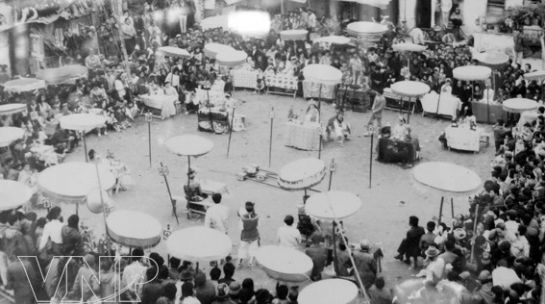
The traditional festival of chess is often held
at Vua Pagoda onThinh Yen
Street,
Hanoi.
| |
|
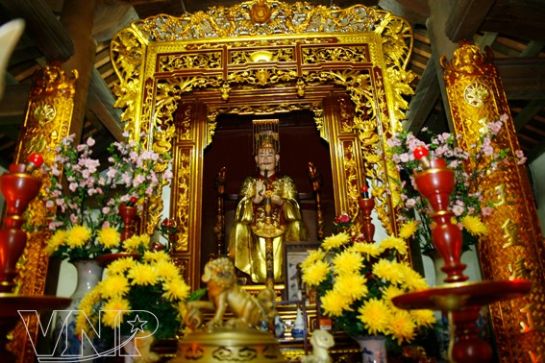
The shrine dedicated to De Thich, the King
of Chess.
|
|
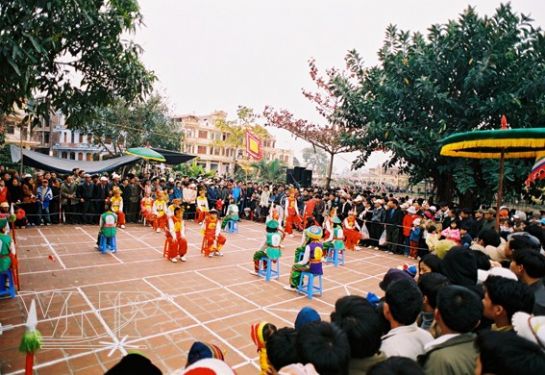
A human chess competition at Vua Pagoda in
Hanoi.
|
|
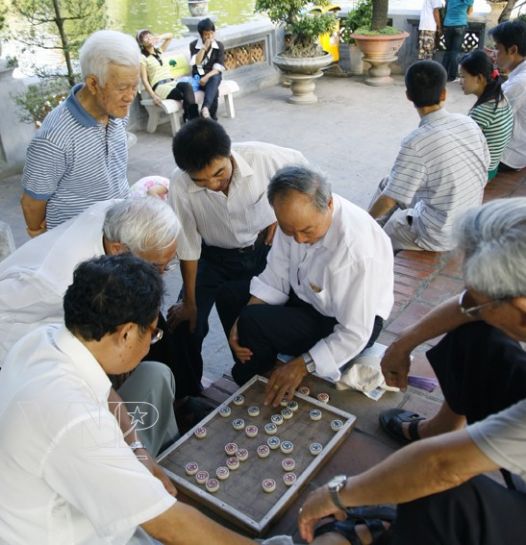
Playing chess
after working hours at Ngoc
Son Temple
on
Hoan
Kiem
Lake (
Hanoi
) is a pleasure of many
gentlemen.
|
|
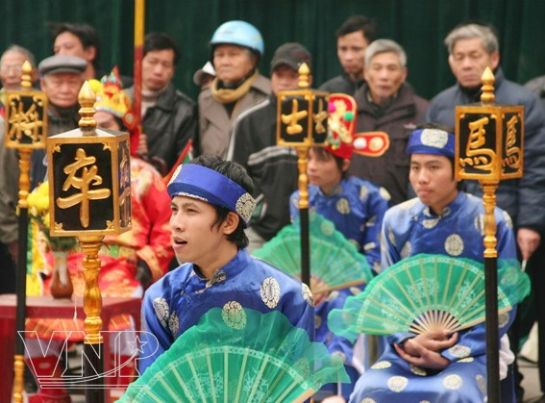
Human chess pieces during a competition at
Van Mieu – Quoc Tu Giam in Hanoi.
|
|
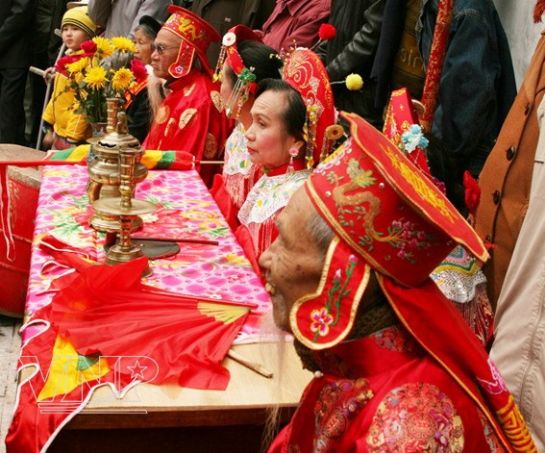
93-year-old veteran chess player Le Uy Ve
(1st) who has played chess for 80 years.
|
nbsp; Two
members of the Vietnamese Chess Association who have been awarded this
special honour are 93 year-year-old Le Uy Ve, who has played chess for
over 80 years and won the chess championship in 1939, 1940 and 1941, and
80-year-old Nguyen Tan Tho who has played chess for 64 years and won the
chess championship in 1953, 1954 and 1955. According to Tho, in the old
days chess competitions were held in early spring at Dong Nhan Temple, at
the Dong Da Mount Festival, Van Mieu – Quoc Tu Giam (in Hanoi), the Phu
Ninh Festival (Gia Lam), Co Loa Temple (Dong Anh) and at the Chem Communal
House (Tu Liem).
There are
different kinds of chess competitions, such as Co nguoi (human
chess match), Co ban, Co boi, Co den, Co treo and Co quat. In Co
nguoi, the ground is marked as a chessboard with men standing for red
pieces and women standing for black pieces, who are controlled by the
players in the rhythm of drumbeats. In Co ban, a table is used as
the chessboard and the pieces are made of wood or ivory. Co boi is
played on the ground on which boards are planted as the pieces. In a Co
den match, the chess pieces are lanterns hung on strings over the
chessboard and the players usually recite a verse in the Kieu tale before
moving each piece. In Co treo, the large chessboard is hung high so
that the viewers can see and comment on the moves. In a Co quat match, each move is controlled according
to the movement of the fan which is folded after each move.nbsp;
A set of chess
consists of 16 red pieces and 16 black pieces, each of which has a name.
The moving of each piece must follow specific rules. When the supreme
piece is defeated the game ends. The best players have the ability to
anticipate their opponent’s moves.
Over the
years, the chess festival has been held solemnly as an international
competition at Vua Pagoda, attracting many outstanding Vietnamese chess
players from all parts of the country. From these competitions, chess
player Nguyen Vu Quan became a Vietnamese chess champion for three
consecutive years, 2007, 2008 and 2009, glorifying Vietnamese chess
throughout the world.
Story: Vinh
Hung
Photos: Hoang Giap –
File
Vinh Hung - Hoang Giap File